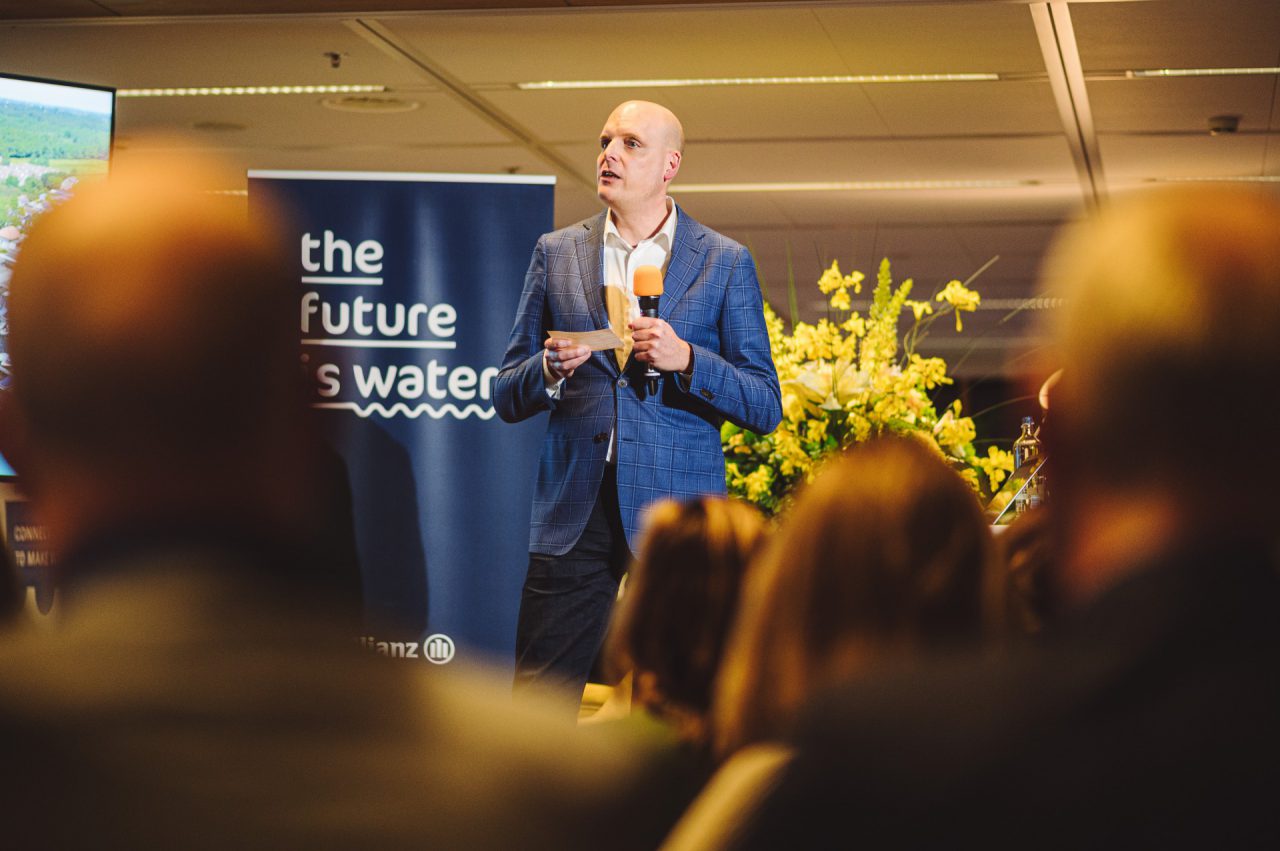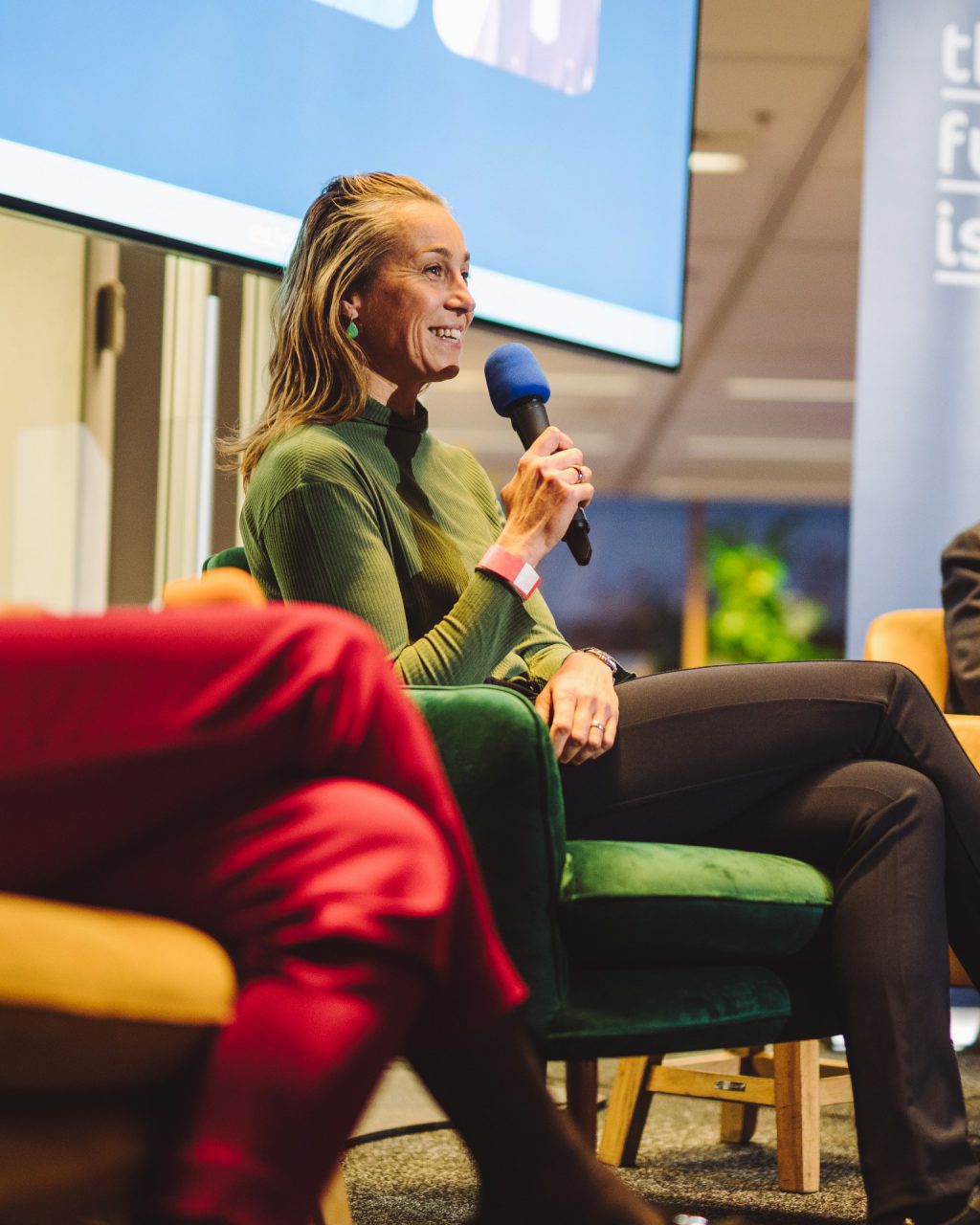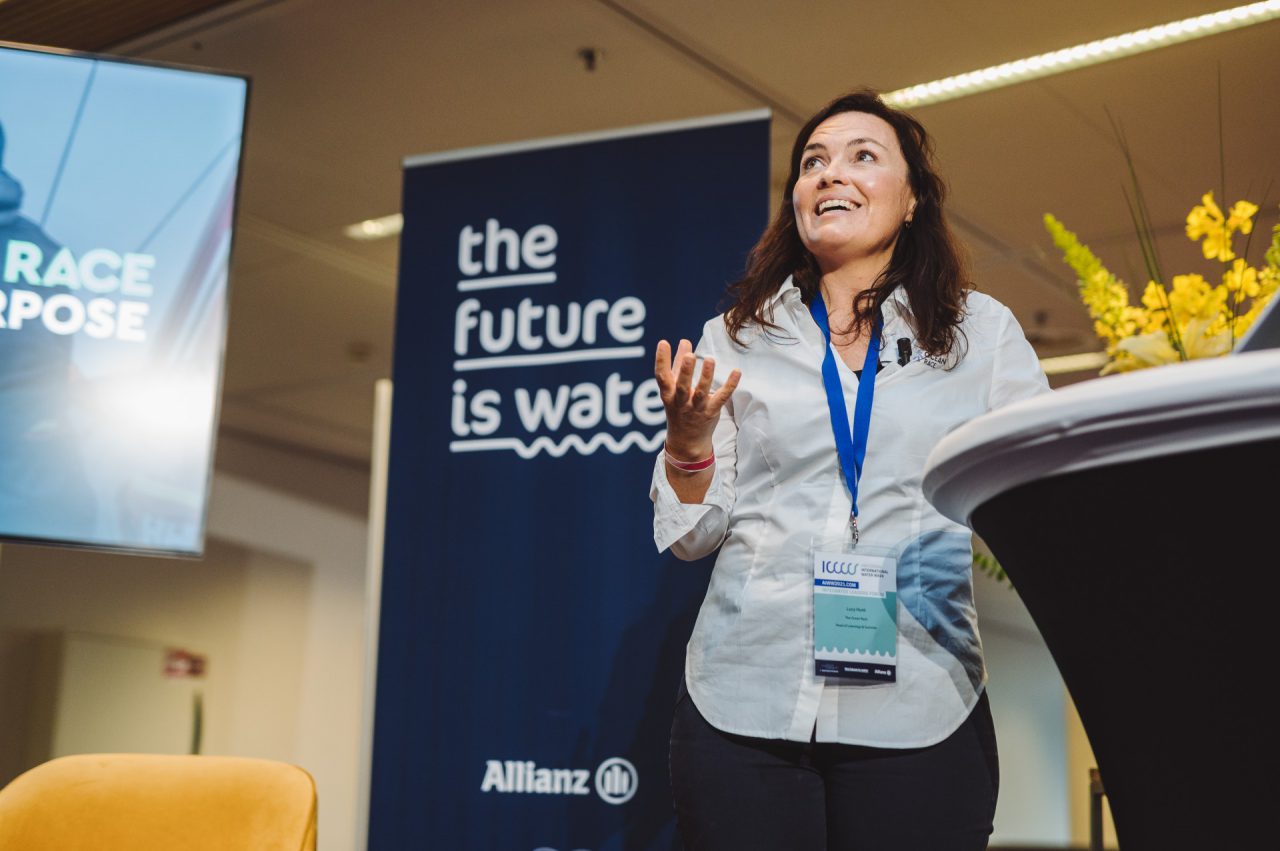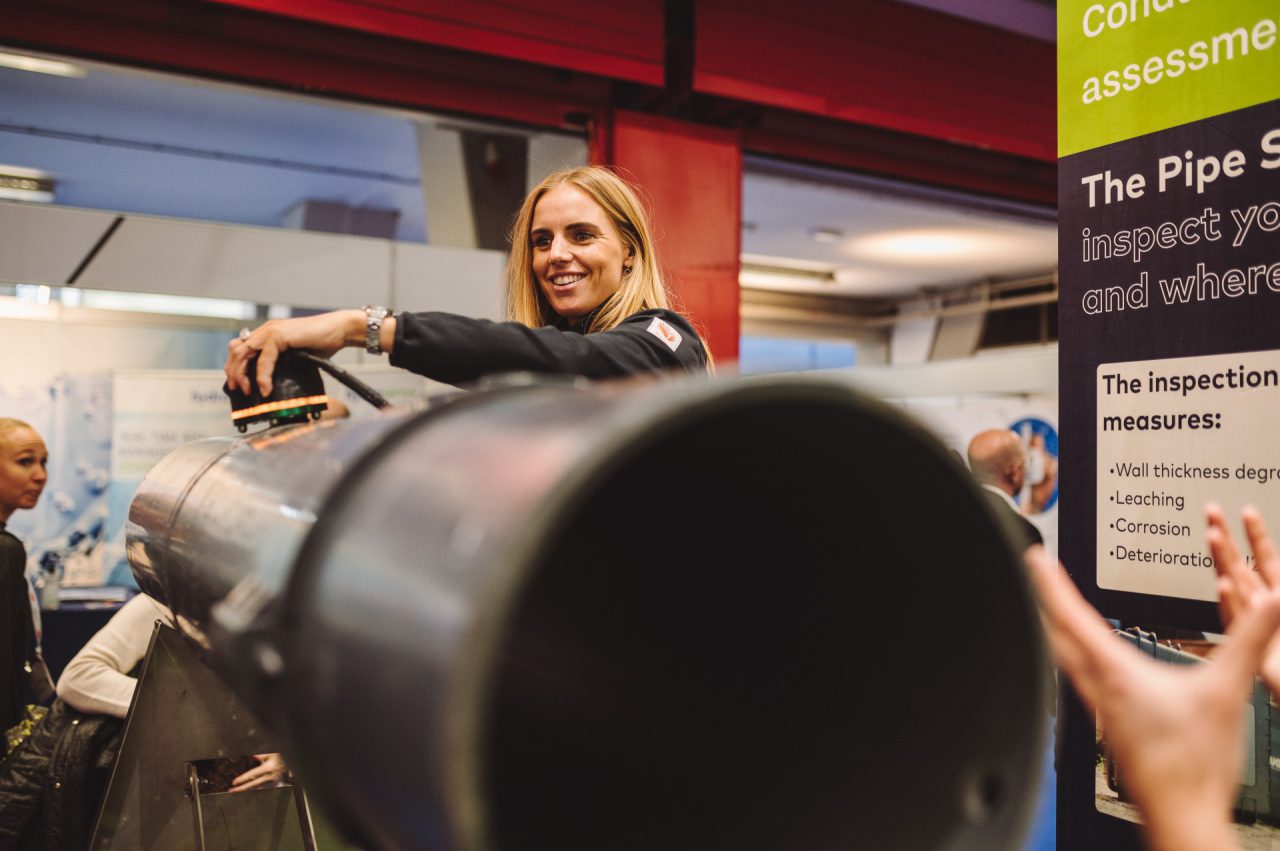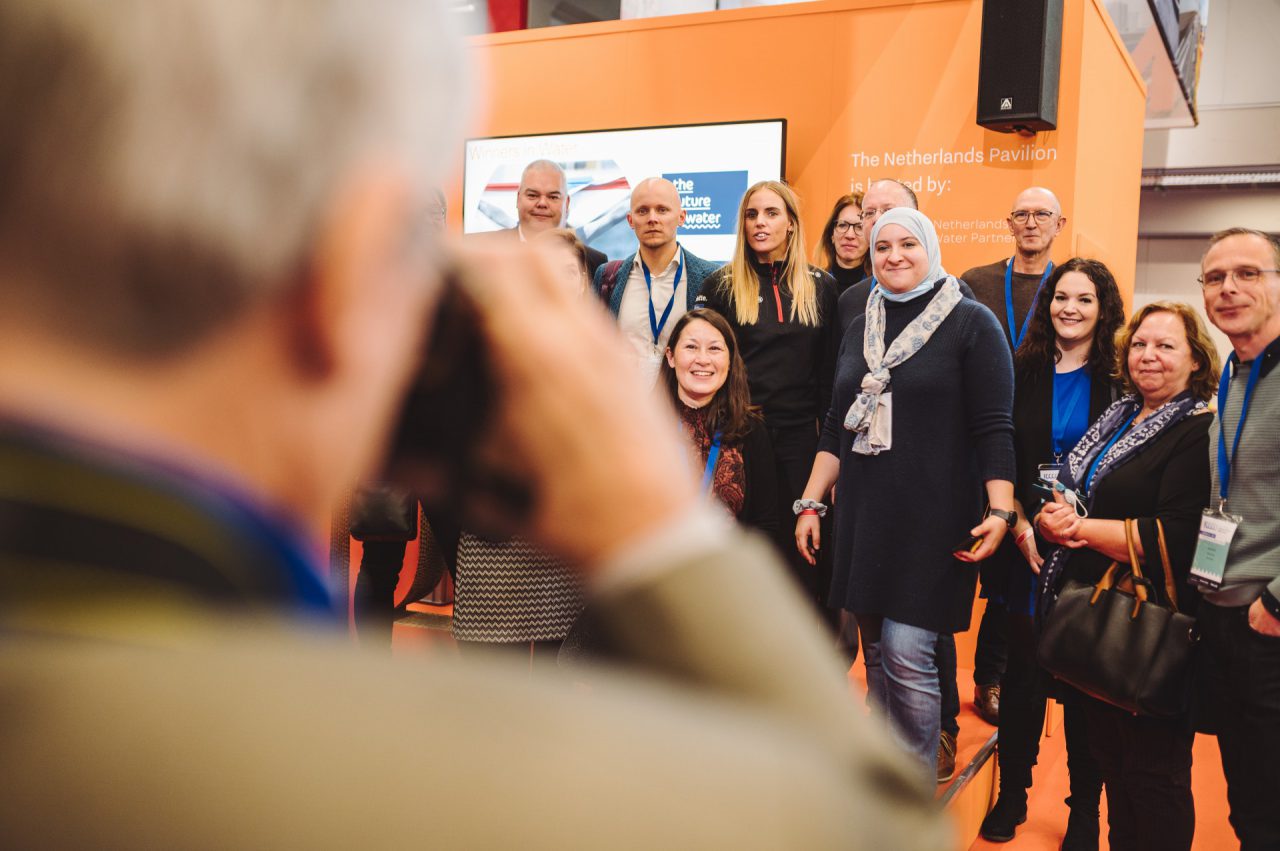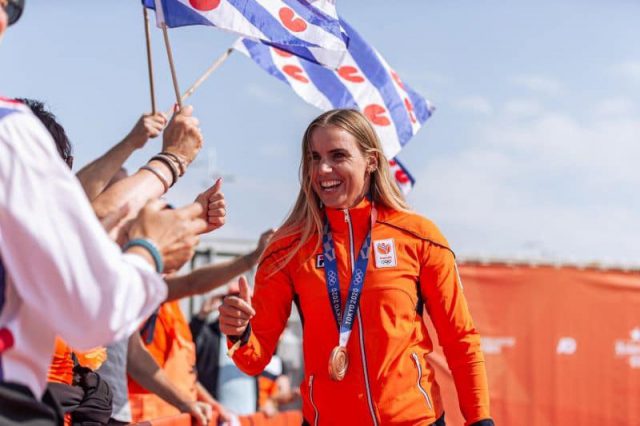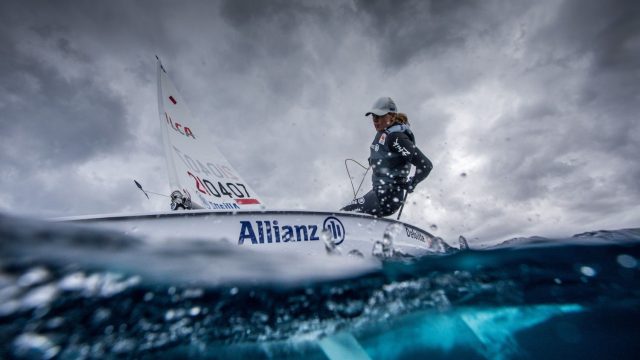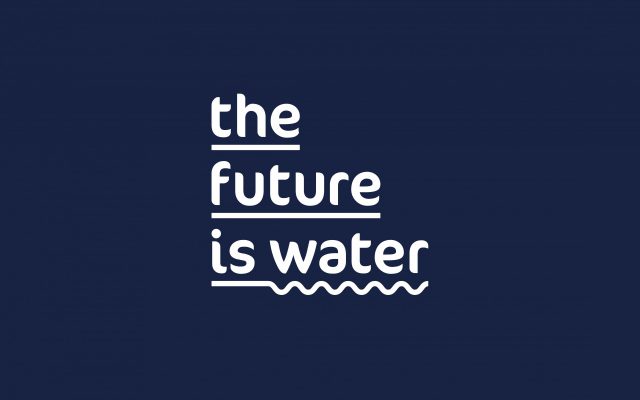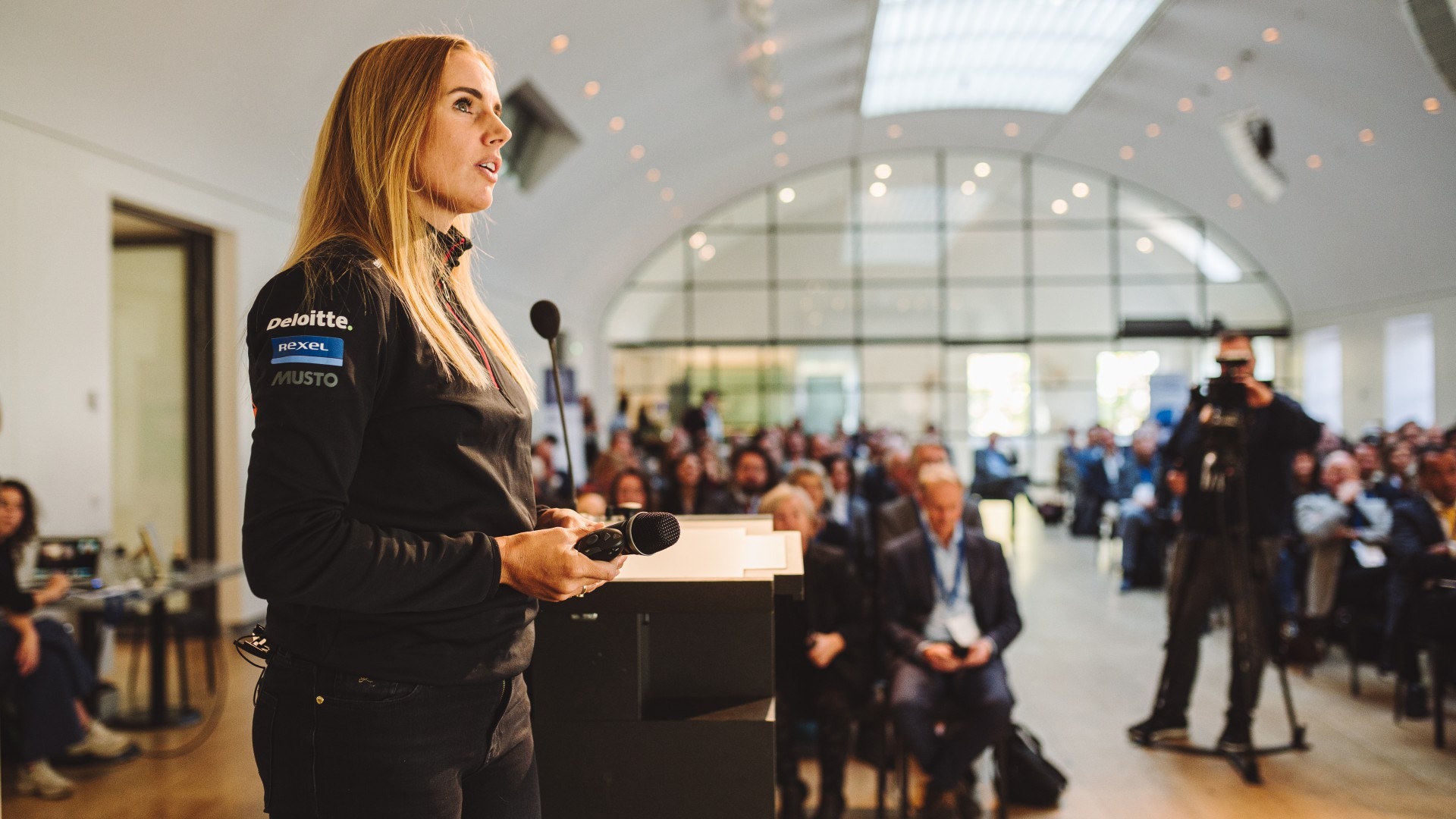
The power of (water)sports for a sustainable impact on water
Using sport to make a sustainable impact on water. That’s the goal of The Future is Water, an initiative of the Royal Dutch Water Sports Association, TIG Sports and partner Allianz. During a symposium at the Amsterdam International Water Week/Aquatech (AIWW/Aquatech), the starting signal was given for the program that combines the power of water and the power of (water) sports.
No better time to connect water sports and water technology than during the AIWW/Aquatech in the RAI, the place where the water world came together from November 1 to 5. Companies like Nijhuis Saur Industries, H24K and CIRTEC showed how they use data and innovation to combat water pollution and purify waste water into drinking water. Data and innovation are also “key” in top-level sports, says multiple Olympic medalist Marit Bouwmeester during a Q&A in the Dutch Pavillion. “In sailing we have to deal with complex factors like wind, currents and weight. We have to measure all that data carefully and then use it intelligently. The one who does that best will be in the lead.”
Impact through awareness
With its mix of water and sport, The Future is Water wants to create awareness about sustainability and water among the widest possible audience in the coming years. In doing so, the initiative relies on four assets of the Watersportverbond, explains Arno van Gerven, director of this association. “The first are our top athletes. They connect, are an example for many and have a great stage. In addition, with our educational program we want to show the youth the beauty and power of water and water sports and how we can use water economically. The third pillar is the water sport events that will take place in the Netherlands in the coming years, such as the Junior World Cup Sailing, the World Cup Sailing and the first edition of the Dutch Water Week, with the World Cup Allianz Regatta as its most important component. These events are a great opportunity to showcase sustainable water innovations and thus create awareness among the public. Finally, with the 400 associations and 80,000 members of the Watersportverbond, we have the power and reach to make an impact.”
The Ocean Race and The Open – best practices
Marit Bouwmeester, along with windsurfers Kiran Badloe and Lilian de Geus, among others, is one of the top sport ambassadors of The Future is Water. The preparations for her gold Olympic race in Rio in 2016 were an eye-opener for her. “The water in which the sailing race was held was hugely polluted and full of plastic waste.” The sailors of The Ocean Race, the world’s largest sailing competition, are also seeing the state of the water deteriorate up close, Lucy Hunt, a biologist and program manager for The Ocean Race, told me during her keynote address. “Plastic pollution and coral bleaching in oceans are increasing, while biodiversity and fish stocks are declining. Through our sport and the race, we can learn about the scale and nature of the problem and create awareness for it.”
Through its Racing with Purpose sustainability program, The Ocean Race seeks to contribute to a cleaner environment and inspire sailors, sports fans, governments, businesses and others. Hunt: “Along the way, the boats collect as much data as possible about the health of the ocean. In addition, together with the cities we visit, we look at how we can make a sustainable impact. In Gothenburg, for example, the public was transported by electric buses. At each location we want to leave a green legacy. Furthermore, we support ecosystem restoration projects, among other things.”
Events like The Ocean Race, with an audience of millions, provide an important stage. The same goes for The Open, one of the most prestigious golf tournaments in the world. They too see their role in creating awareness of and impact on the environment, sustainability manager Philip Russel says in a video message. “Many of our golf courses are on the coast. So we are closely connected to marine ecosystems. We try to protect that nature as much as possible, for example with our GreenLinks program.” In addition, The Open developed refillable water bottles together with Blue Water to stop the use of disposable plastic.
Sports, cities and sponsors
Although Hunt calls the planet the most important ‘shareholder’, sport cannot exist without sponsors and partnerships. According to Paul Möller, head of communications Allianz Benelux, it is important to invest in sports in a responsible way, he said during the panel discussion. “When organizing a sports event you have to deal with the city, the sport and sponsors. As a sponsor and partner, sustainability is central to our investments. It’s no longer that we just give money because we like something. We set sustainability requirements and try to raise the bar higher and higher. The sport ultimately forms the showcase of our partnership.”
Using top sports mentality
In addressing water and environmental issues, we need to learn from the focus and strategies that top athletes use, says Dobrescu, director of Water Footprint Implementation. “Sport is about showing what is possible, pushing boundaries and working together for the best result.” Former Olympic sailor and silver medalist Marcelien de Koning is going to use that top sports mentality as Chef d’Emission to make sports more sustainable in the coming years. “Sport is the way to convey an important message. You can see that after today with the examples of The Ocean Race and The Open Golf. Sport connects and has an enormous power to inspire. We need to start using that for our common goal”.
